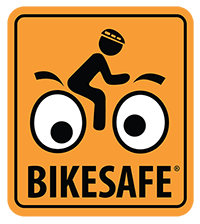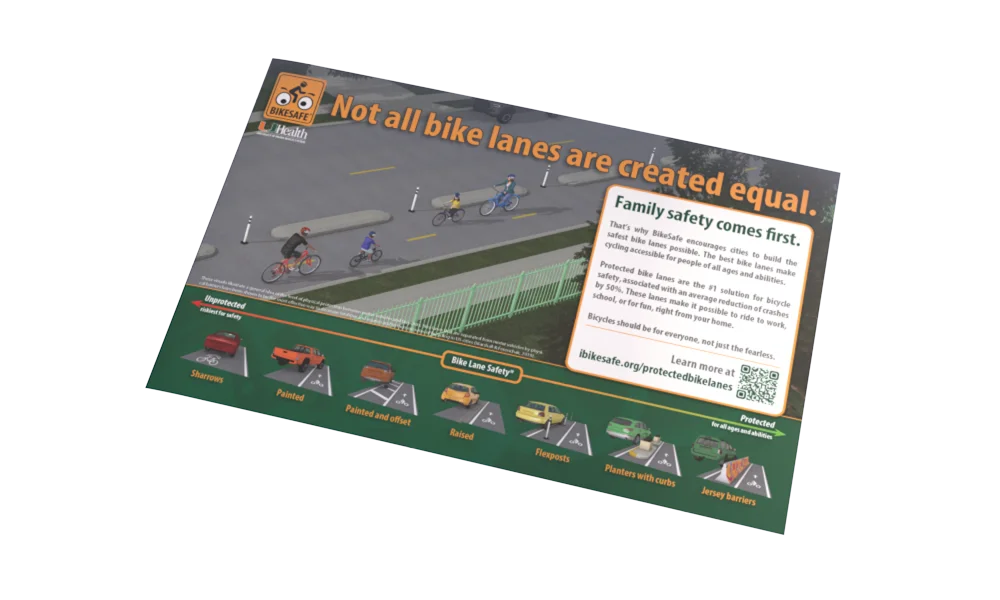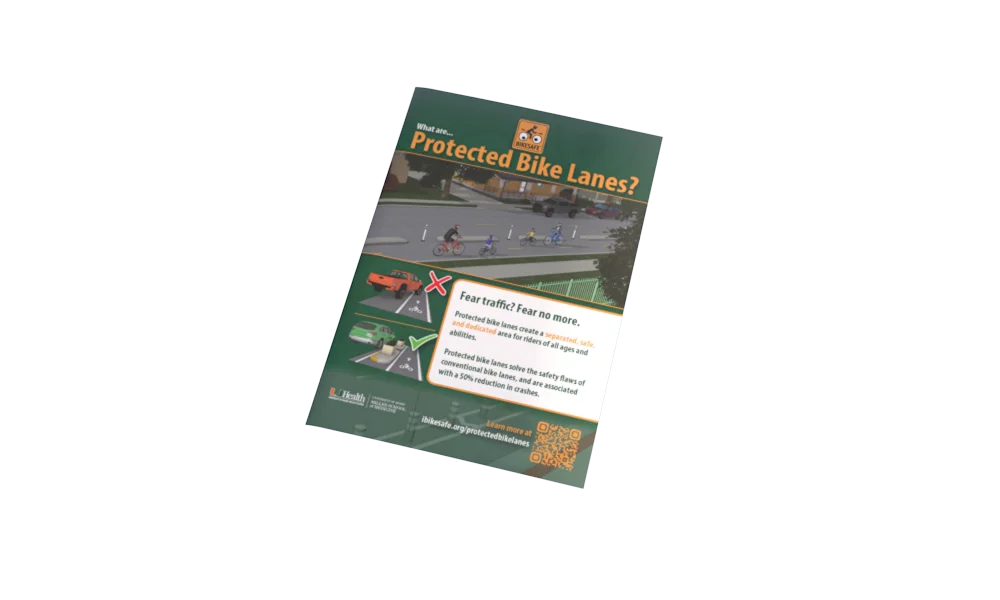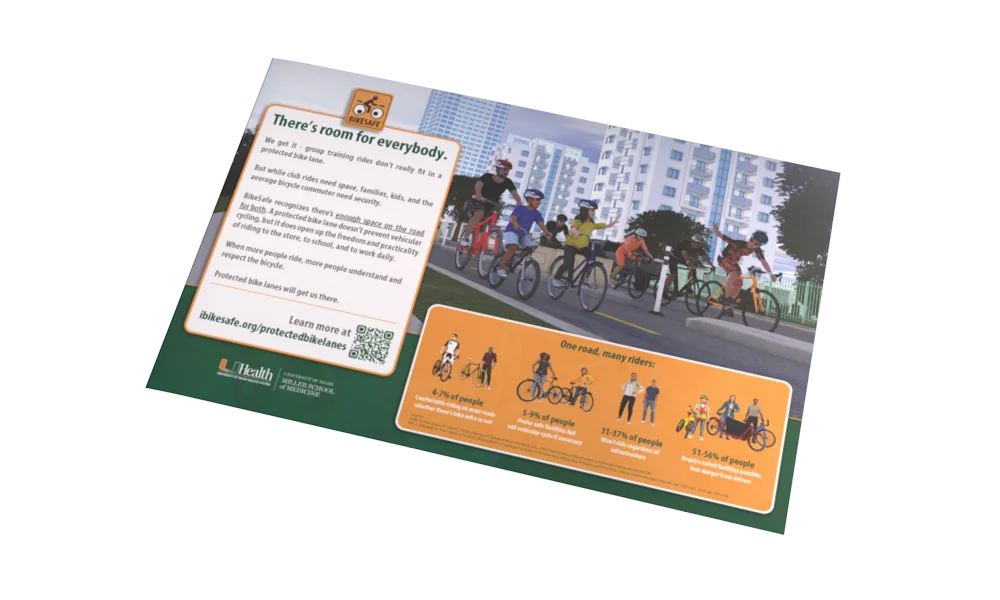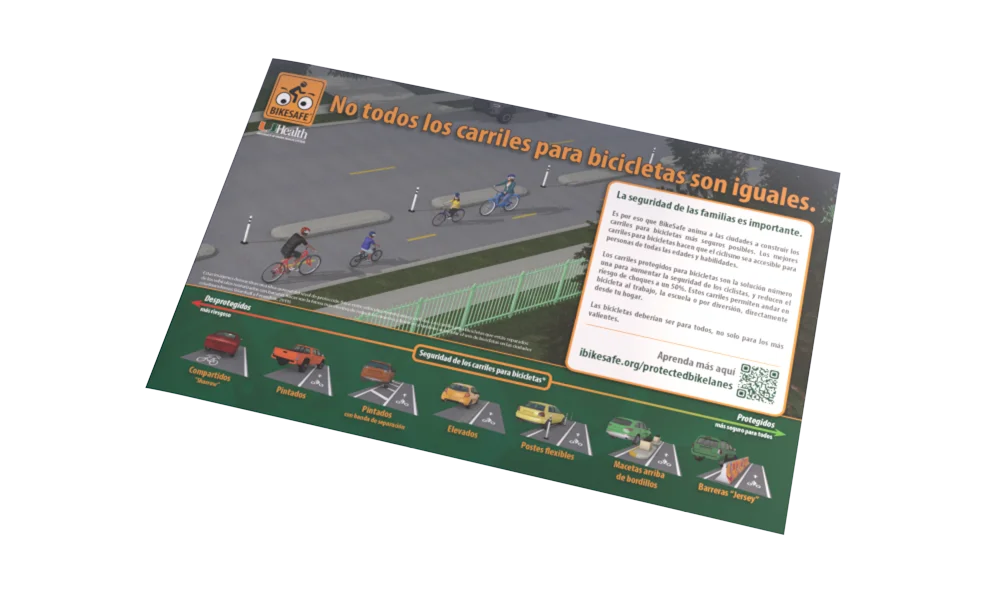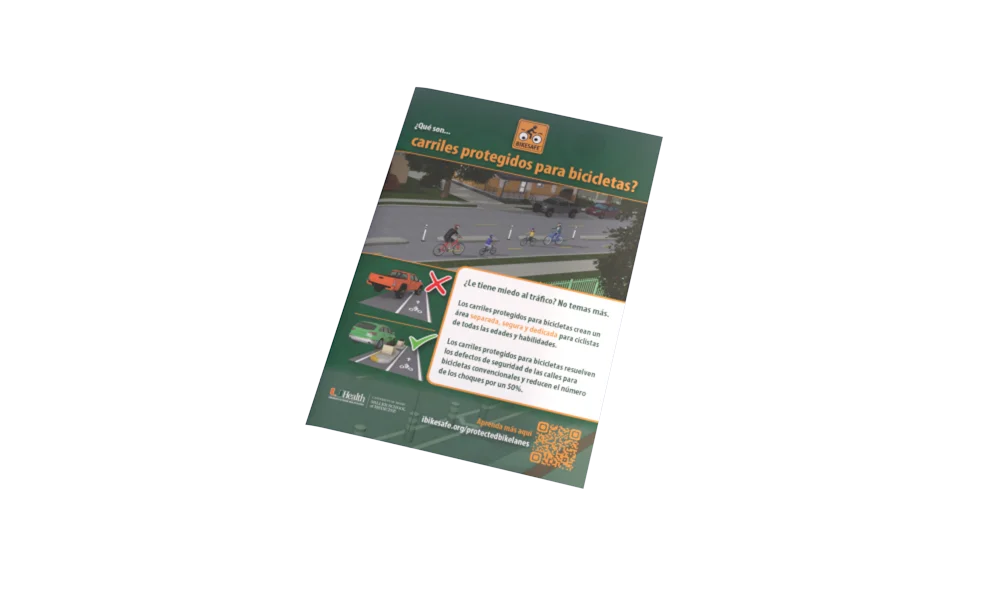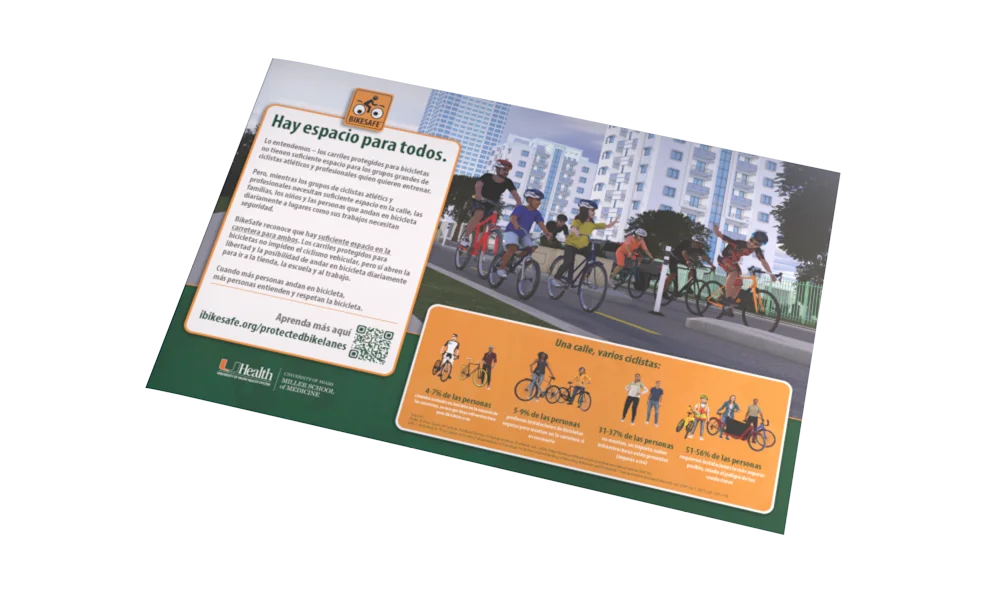All-ages safety comes first.
Whether we ride a bicycle for recreation, to school, to work, to beat traffic congestion, or simply for financial reasons, the availability of a safe route influences our ability to use a bicycle for that trip.
Until recently, most bicycle infrastructure in the United States has not provided the connectivity or safety that most people require. Fortunately, engineers, planners, public health professionals, and advocates are beginning to realize that "paint is not protection," and that bike lanes must evolve to serve more than only the most fearless of riders.
Not all bike lanes are created equal
Youth mobility and injury prevention are our missions at BikeSafe, which is why we encourage cities to build the safest bicycle facilities possible.
Protected bike lanes - that is, bikeways with significant physical protection - create equitable, family-friendly bikeways that make riding a low-stress activity for riders of all ages and abilities, free of the dangers of automobile traffic.
Networks of these lanes turn cycling into a feasible, safe, and enjoyable mode of transportation, one that has the additional benefit of improving physical health while also reducing traffic congestion and emissions. (Plus, you won't have to circle the block five times for a parking space).


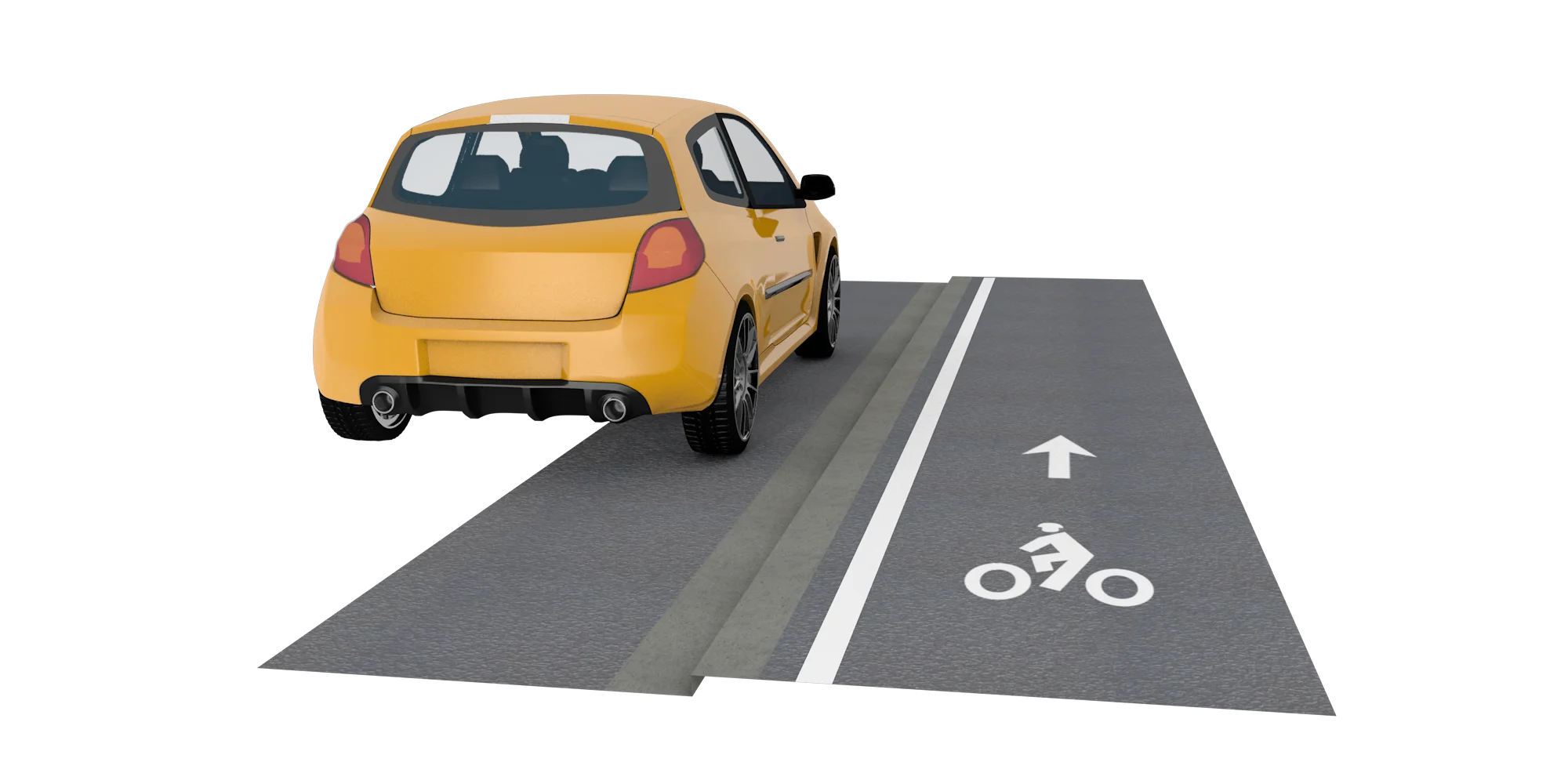
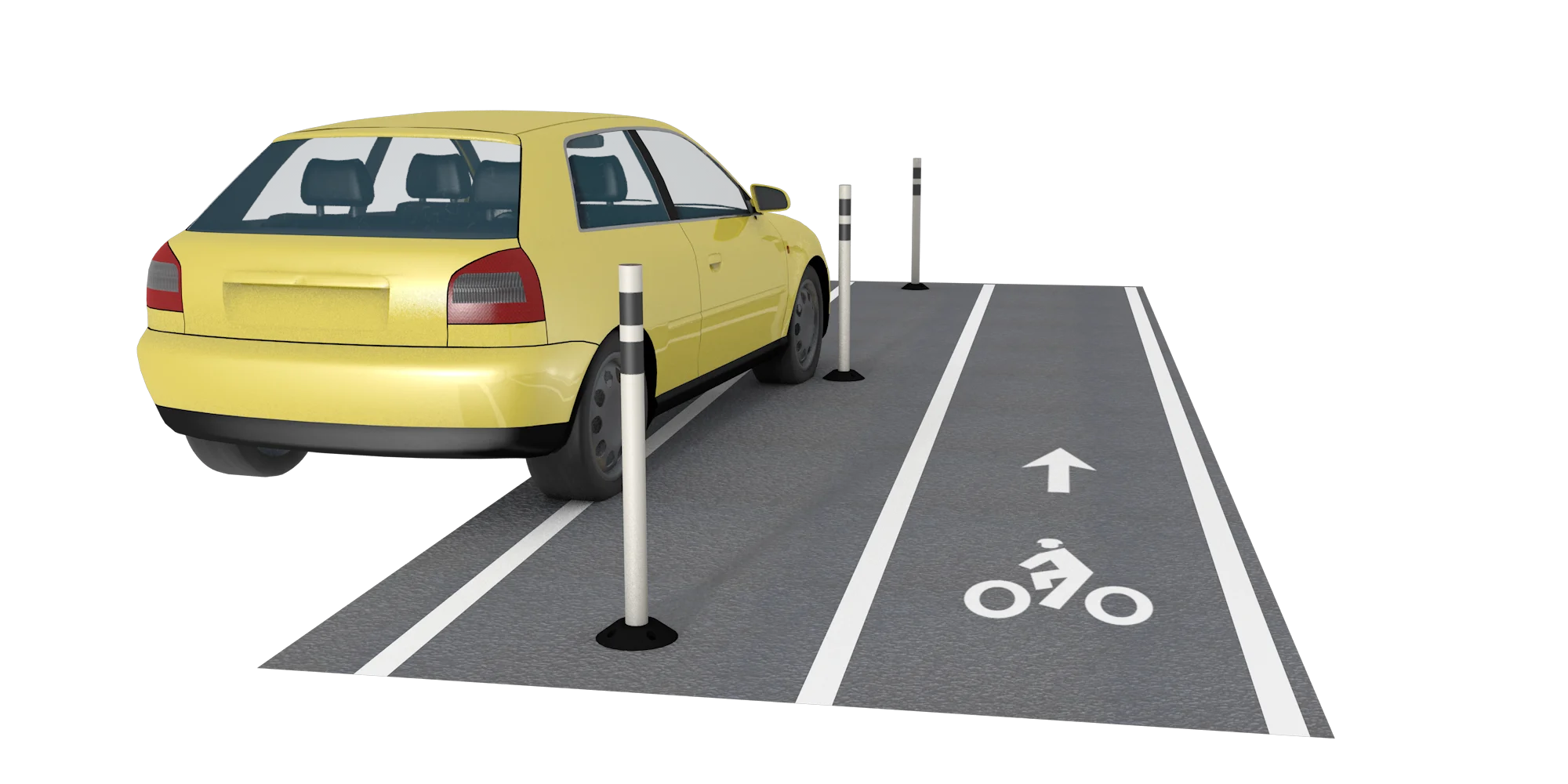
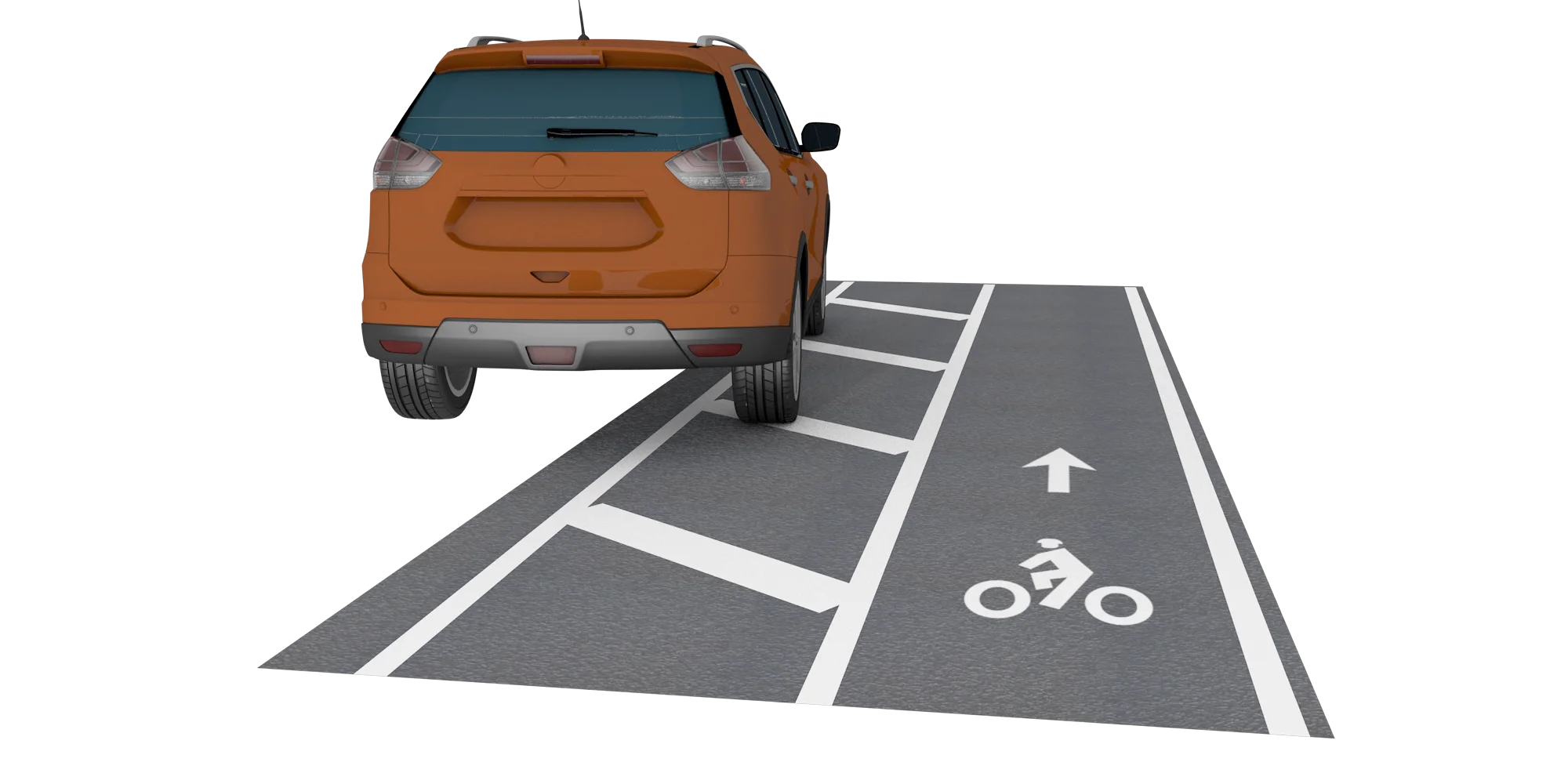
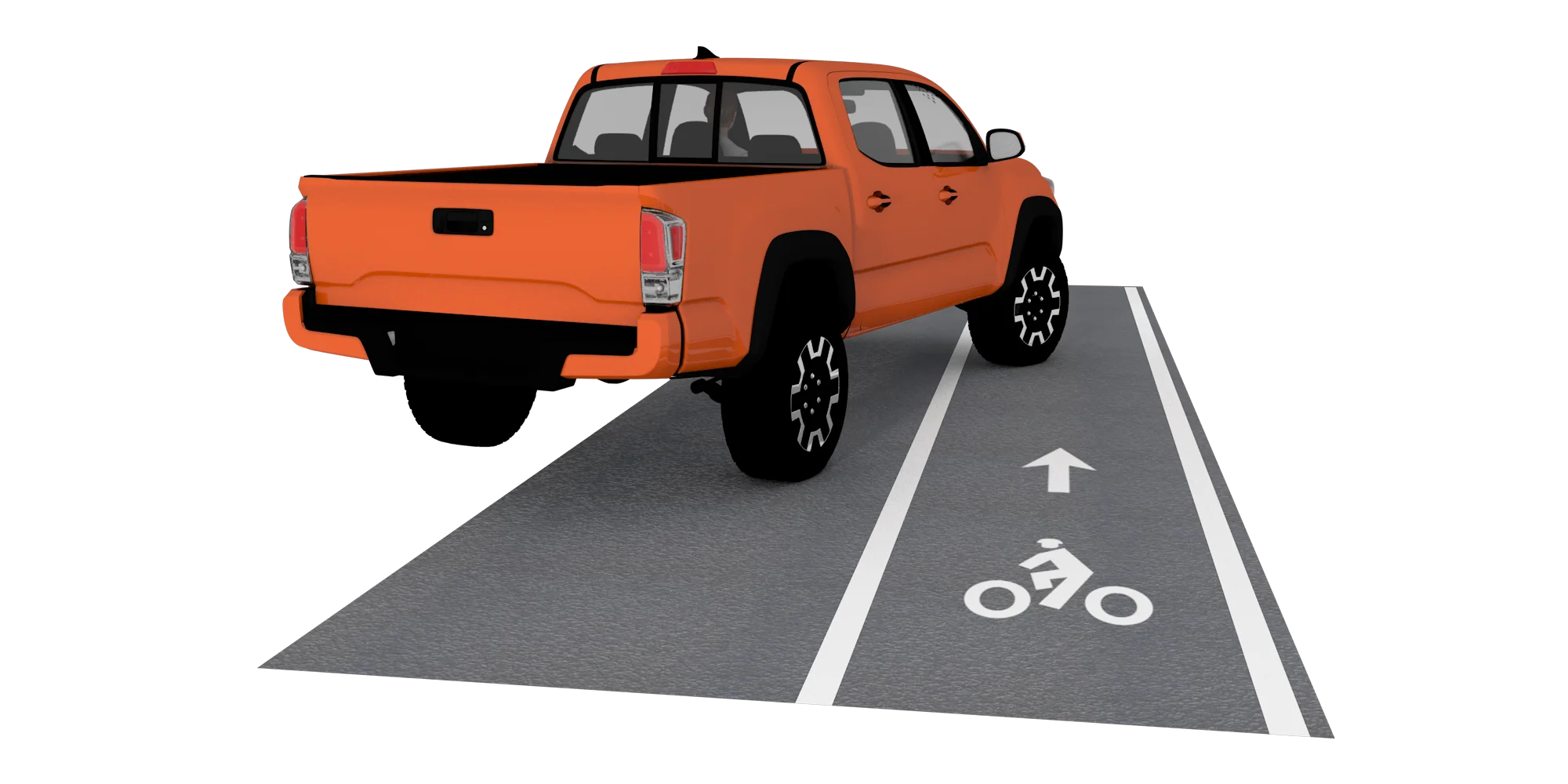

Protected bike lanes work
The safety benefits of protected bike lanes are not by chance: Over a 13 year period - the most comprehensive study of its kind - the University of Colorado Denver and the University of New Mexico studied 12 US cities that implemented bicycle infrastructure, reviewing "over 17,000 fatalities and 77,000 severe injuries."
From the results collected during the study, the researchers concluded that the cities that built complete networks of "protected and separated bike lanes" (on-road with physical separators, curb separated/raised, and trails) - would see a projected reduction in survivable bicycle crashes by 50%, and a 44% reduction in fatal crashes while seeing an increase in overall ridership.
Other studies have followed with similar results. Put simply, properly-designed protected bike lanes don't just "feel safer," they are safer.
Road engineering and more
While implementation of protected bike lanes have been slow, US road engineers received official federal guidance for separated bicycle facilities 1 in the 2023 revision to the Manual on Uniform Traffic Control Devices or 11th Edition MUTCD.

Additional standards have been working their way into other crucial road engineering documents, including the American Association of State Highway and Transportation Officials (AASHTO) "Green Book," a design guideline used by (and sometimes adapted) by many states and municipalities for road design.
Protected intersections
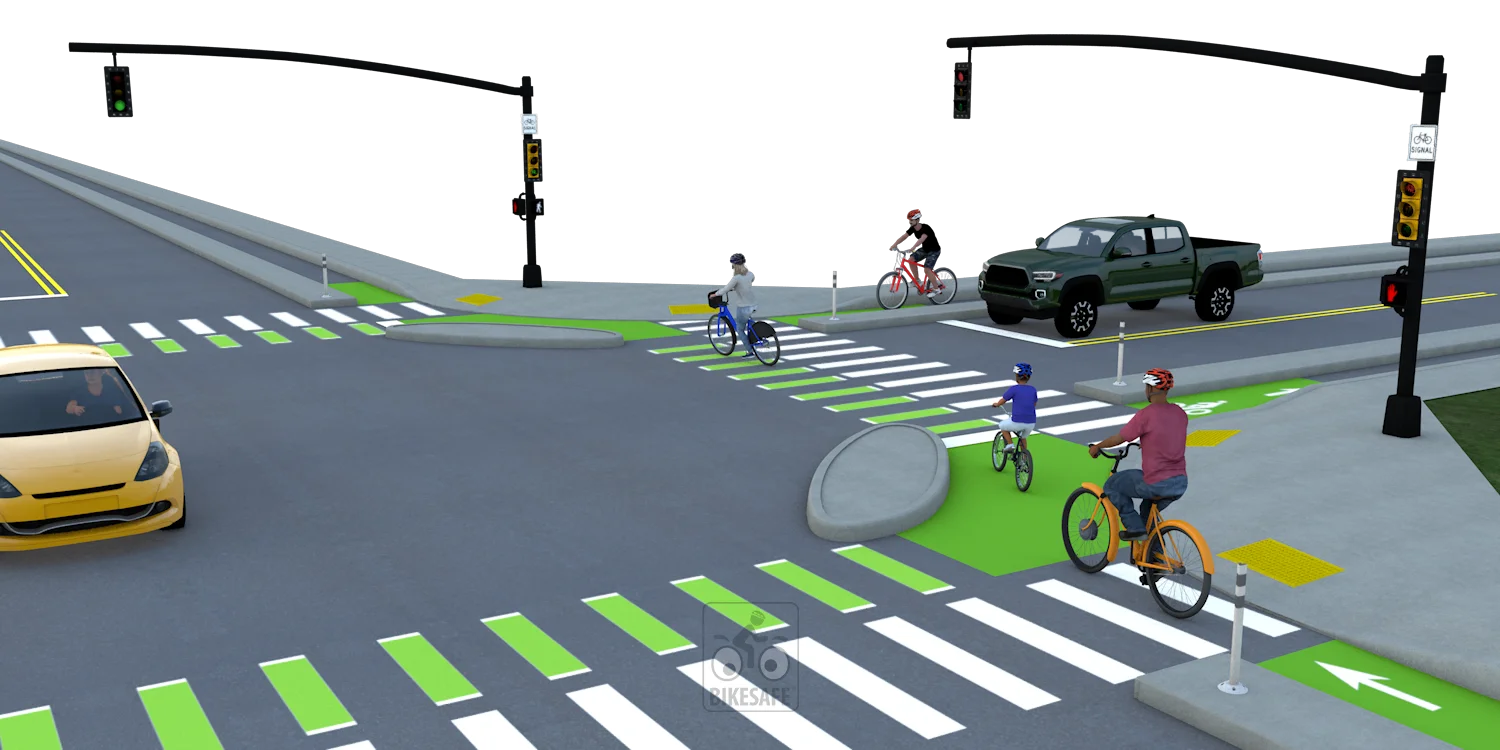
Intersections present a unique set of complications with multiple conflict points for all road users - bicycle riders, pedestrians, micromobility users, and drivers alike. To solve this, a protected intersection adds curb extensions to the corners of a standard intersection. These extensions shield riders from drivers.
Their design also positions the stop line for bicycles farther forward from the stop line for automobiles. This puts drivers - and pedestrians - in the clear vision of any driver planning to turn right.
This positioning also creates advance time for riders to accelerate, in advance of the driver making the right turn reaching the bike lane crossover or "mixing zone."
Download a flyer!
If you are looking for a printable resource that summarizes the importance of protected bike lanes, consider one of these handout-sized flyers.
Safe bike lanes in Miami, Florida:
While some cities are making good progress, and Miami's own Vision Zero team is working on implementation strategies to fix high-risk areas in the County, a lot of advocacy and encouragement remains to make them a staple of our streets in South Florida.
Asking for safer streets:
Street engineering and maintenance in Greater Miami is divided between the Florida Department of Transportation District 6 (FDOT District 6) and Miami-Dade County's Department of Transportation and Public Works (DTPW). Miami-Dade County maintains the majority of local roads, while FDOT has jurisdiction over some of the larger multi-lane arterials.
While Miami-Dade County oversees final roadway designs for municipalities as well, each municipality has a staff of engineers and planners on hand to submit design improvements for review.
It is always worthwhile to maintain a productive, respectful narrative with the Public Works officials in your area of Miami if you want to see more efforts put towards safer streets. Use the list below to find your Public Works department. Keep in mind that requests through your local commissioner (or commissioners) tend to receive increased priority.
Also, please understand that limitations upon engineer's freedom to apply traffic calming on a given roadway may not be self-imposed, but a limitation that comes from engineering guides like the Manual on Uniform Traffic Control Devices (MUTCD) or Florida Greenbook. In these cases, addressing your concerns to state and federal traffic engineers is the best way to work towards standards that serve people walking, riding, and rolling.
More Resources
Making neighborhoods better with protected bike lanes
BikeSafe
Designing for All Ages & Abilities
National Association of City Transportation Officials (NACTO)
Protected Bicycle Lane Analysis
NYC Department of Transportation, 2014
How To Make School Zones Safer with Protected Bike Lanes
Safe Kids Worldwide
In Austin, a Protected Bike Lane Built to Help Kids Get to School
Streetsblog USA
The Disappointing Distraction of “Vehicular Cycling”
Oh the Urbanity! (YouTube)
Tired of Cyclists Riding on the Sidewalk? Build More Bike Lanes
Bloomberg
Cyclists' Public Enemy Number One
Outside Online
